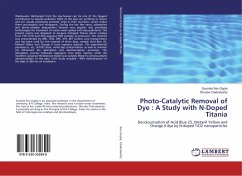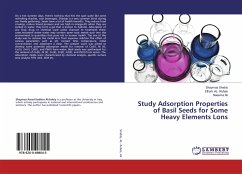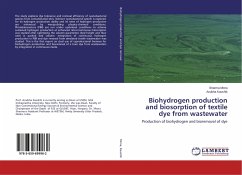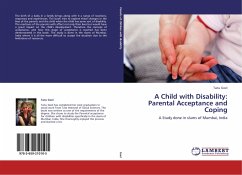Wastewater discharged from the dye-houses can be one of the biggest contributors to aquatic pollution. Most of the dyes are synthetic in nature and are usually possessing aromatic rings in their structure, which makes them carcinogenic and mutagenic. During the last few years, adsorption and photo-catalytic degradation became very popular and promising technologies for treatment of waste water spiked with dye pollutants. The present works was designed to prepare N-doped Titania photo catalyst from 15% TiCl3 and 25% aqueous NH3 solution as precursor. The material was characterised by XRD, TEM, DRS, XPS, BET surface area measurement and has been used for the removal of three dyes, namely, Acid Blue 25, Metanil Yellow and Orange II from aqueous solution. The experimental parameters, viz., N-TiO2 dose, initial dye concentration as well as solution pH influenced the adsorption and decolourisation processes. The adsorption process followed Lagergren first order kinetics while the modified Langmuir-Hinselwood model was suitably fitted for photocatalytic decolourisation of the dyes. COD study revealed ~90% mineralisation of the dyes in 360 min of irradiation.
Bitte wählen Sie Ihr Anliegen aus.
Rechnungen
Retourenschein anfordern
Bestellstatus
Storno








